Serious students of survival know a knife is the second most important survival
tool, next only to the one found between your ears.
The farther off the beaten track you are, the bigger the blades you need.
The JEST Bolo , is the blade used by the Aetas at the Jungle Environmental Survival
Training School in the former american Subic Naval Base.
Its also called the sinampaloc, and the design is the one favored by the Americans who trained there from the Viet Nam war onwards.
I think you guys prefer the parang as thats the one used by the
Malaysians, where most train in Jungle operations.
Also probably why the SAS survival manual features the parang.
Ive attended JEST twice, so I wanted a blade like theirs and after over TEN YEARS of searching, Ive found the ACTUAL smith who has made THOUSANDS of these bolos for the aetas at JEST. His experience shows.

There are several design elements that are very good in this blade-the sharp
point is used to make holes like in the bamboo fire saw.
Some versions have a rounded point, which is used more as an agricultural tool.
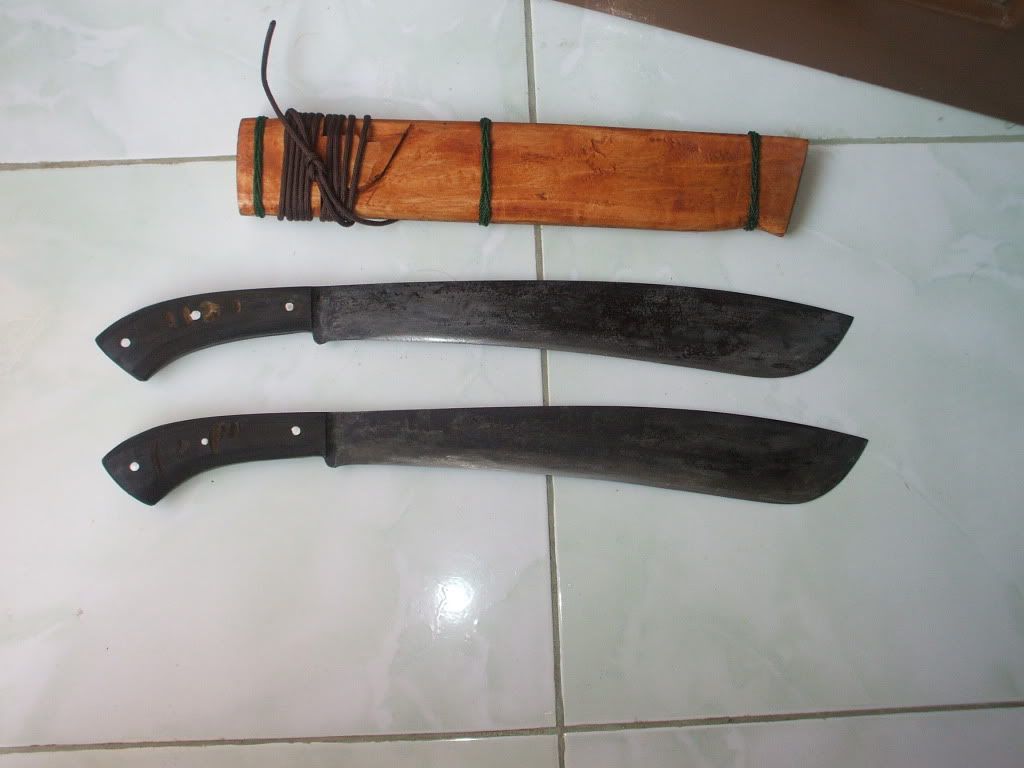
This one is more like the older version, which is used for jungle survival but can be used to fight with.
Blades like these are not to be used as digging implements.
You should cut a stick and sharpen it to a point and use THAT as a digging tool to prevent damage to your blade.
It takes a long time to sharpen blades the way you want and you dont want the edge dulled by a stupid task like digging.
The forward curve is somewhat like a kukri so it can chop pretty well but its really designed so you can shave bamboo for tinder when held at 90 degrees.
This bolo has a distal taper starting from 3/16" in front of the handle to 1/8" at the tip.
I prefer thinner bolos as they are lighter and can be swung much faster-combining a slasher and a chopper.
You can slash talahib, cogon (types of philippine grass which may be over ten feet high, with razor sharp leaves) and still make a jungle shelter and even chop small trees down.
I had 1/4" versions made and while they chopped very well, were extremely heavy and didnt slash very well.
For highly vegetative areas like the jungle, I prefer a blade light enough to slash but with enough weight to chop.
Blade length is normally 13-14", full tang, and made from 5160 leaf spring carbon steel differentially tempered-hard edge and spring back.

The YELLOW line shows part of the blade with a softer temper than the edge, but harder than spring temper.
The RED line shows the hard edge, which is about 1/4" to 3/8" in depth.
This special tempering makes the bolo VERY Tough indeed!
Normally, the blade is also blackened except for the edge-a good feature for
working blades because this black portion holds oil and so protects the blade.
I also like my blades to be "black" as theyre meant to WORK, not to show off!
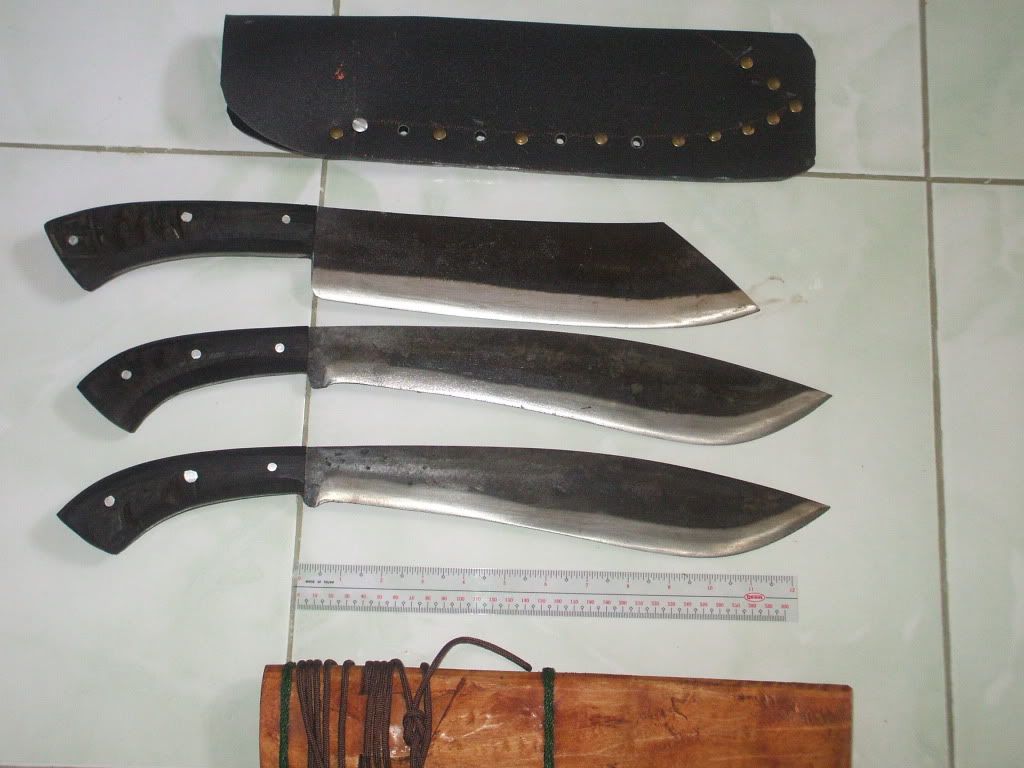
Handle is carabao horn, and can be used as a blood coagulant when shaved and applied to large wounds.
The handle is also the old style called the 'baluktot', which is more comfortable to hold when chopping for long periods.
Note the forward handle cant which helps in chopping-the edge hits the media at an anle and so "draw cuts".
Rivets are made from aluminum, which doesnt rust and can easily be field tightened.
Some use large nails but I dont like them as they rust and can cut your hand.
Ive seen bolos with aluminum rivets used in high corrosion salt water environments,
they work! Not ideal, but better than the ones that use large nails.
The regular version has a pinky widening, but at an acute angle so it pinches my
hand when I chop up stuff for hours.

I did have my smith make me a couple of these as Id like to compare performance.
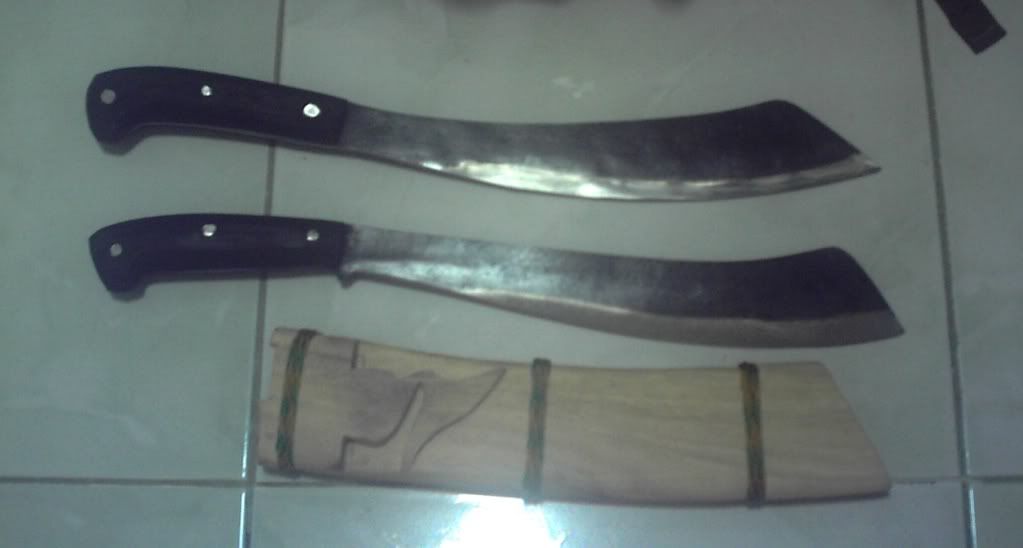
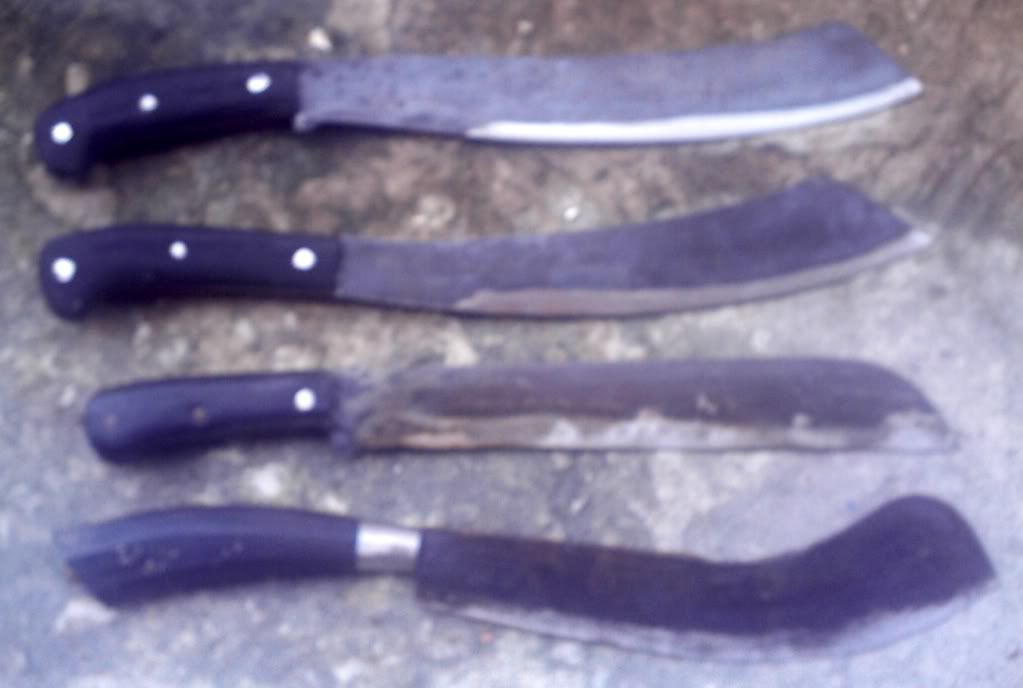
The lower two are local versions, but I wanted one like uncle Ray's.
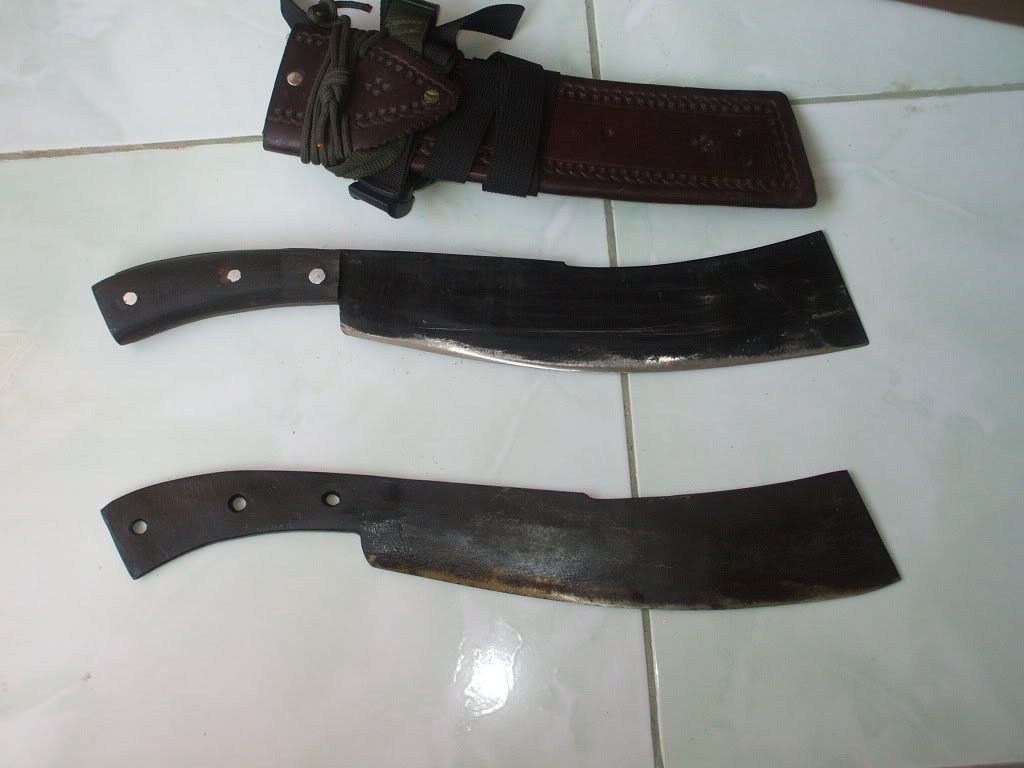
Here are two of my favorites-these are extremely thick, cleaver like, hence I dont usually carry em.
tool, next only to the one found between your ears.
The farther off the beaten track you are, the bigger the blades you need.
The JEST Bolo , is the blade used by the Aetas at the Jungle Environmental Survival
Training School in the former american Subic Naval Base.
Its also called the sinampaloc, and the design is the one favored by the Americans who trained there from the Viet Nam war onwards.
I think you guys prefer the parang as thats the one used by the
Malaysians, where most train in Jungle operations.
Also probably why the SAS survival manual features the parang.
Ive attended JEST twice, so I wanted a blade like theirs and after over TEN YEARS of searching, Ive found the ACTUAL smith who has made THOUSANDS of these bolos for the aetas at JEST. His experience shows.

There are several design elements that are very good in this blade-the sharp
point is used to make holes like in the bamboo fire saw.
Some versions have a rounded point, which is used more as an agricultural tool.

This one is more like the older version, which is used for jungle survival but can be used to fight with.
Blades like these are not to be used as digging implements.
You should cut a stick and sharpen it to a point and use THAT as a digging tool to prevent damage to your blade.
It takes a long time to sharpen blades the way you want and you dont want the edge dulled by a stupid task like digging.
The forward curve is somewhat like a kukri so it can chop pretty well but its really designed so you can shave bamboo for tinder when held at 90 degrees.
This bolo has a distal taper starting from 3/16" in front of the handle to 1/8" at the tip.
I prefer thinner bolos as they are lighter and can be swung much faster-combining a slasher and a chopper.
You can slash talahib, cogon (types of philippine grass which may be over ten feet high, with razor sharp leaves) and still make a jungle shelter and even chop small trees down.
I had 1/4" versions made and while they chopped very well, were extremely heavy and didnt slash very well.
For highly vegetative areas like the jungle, I prefer a blade light enough to slash but with enough weight to chop.
Blade length is normally 13-14", full tang, and made from 5160 leaf spring carbon steel differentially tempered-hard edge and spring back.

The YELLOW line shows part of the blade with a softer temper than the edge, but harder than spring temper.
The RED line shows the hard edge, which is about 1/4" to 3/8" in depth.
This special tempering makes the bolo VERY Tough indeed!
Normally, the blade is also blackened except for the edge-a good feature for
working blades because this black portion holds oil and so protects the blade.
I also like my blades to be "black" as theyre meant to WORK, not to show off!

Handle is carabao horn, and can be used as a blood coagulant when shaved and applied to large wounds.
The handle is also the old style called the 'baluktot', which is more comfortable to hold when chopping for long periods.
Note the forward handle cant which helps in chopping-the edge hits the media at an anle and so "draw cuts".
Rivets are made from aluminum, which doesnt rust and can easily be field tightened.
Some use large nails but I dont like them as they rust and can cut your hand.
Ive seen bolos with aluminum rivets used in high corrosion salt water environments,
they work! Not ideal, but better than the ones that use large nails.
The regular version has a pinky widening, but at an acute angle so it pinches my
hand when I chop up stuff for hours.

I did have my smith make me a couple of these as Id like to compare performance.


The lower two are local versions, but I wanted one like uncle Ray's.

Here are two of my favorites-these are extremely thick, cleaver like, hence I dont usually carry em.
